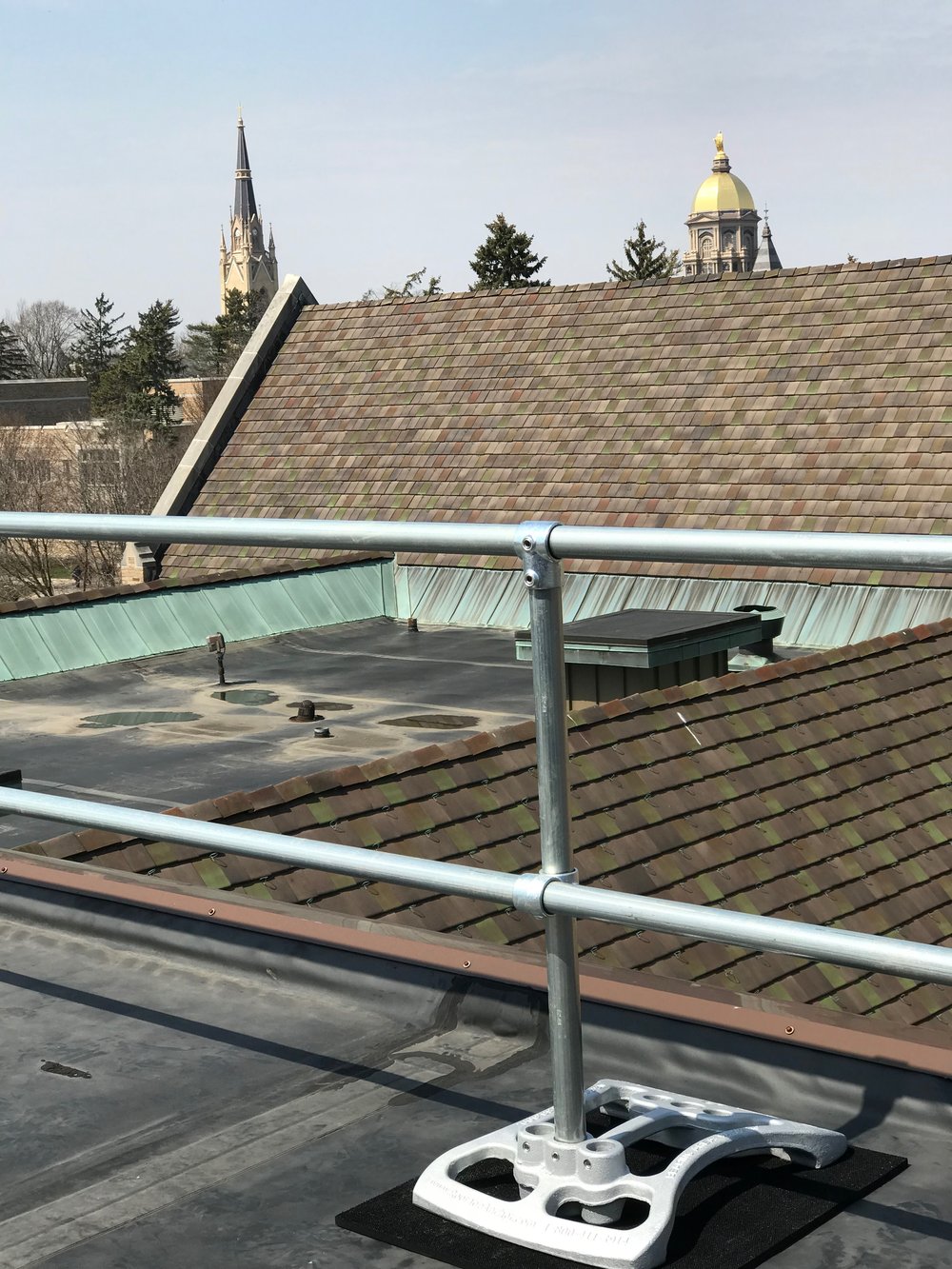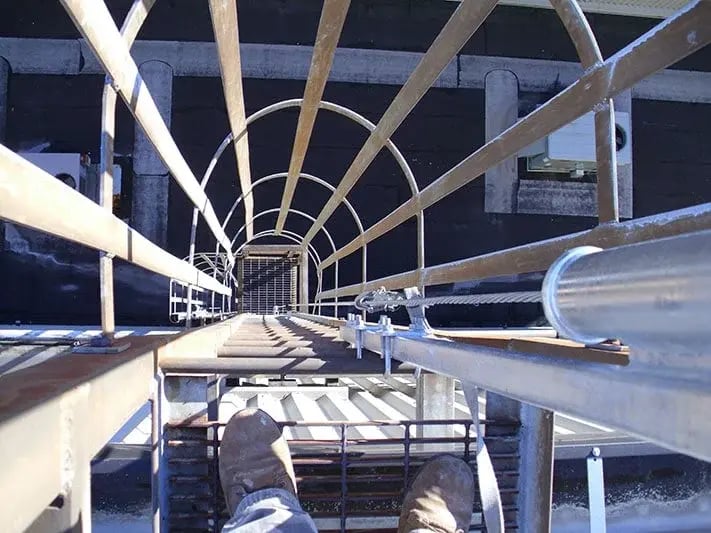Schools, Colleges and Universities
The boiler systems, air handling units, and rooftop maintenance and repair applications commonly found on most college campuses find service personnel working both at heights and in confined spaces on a regular basis. In addition to protecting maintenance personnel and complying with OSHA fall protection regulations, there is a need to balance aesthetics and public safety while considering fall protection systems for university settings. Fall protection systems must often blend in with existing building designs and there is always the fear of students using ladder systems to access campus rooftops. Balancing these various considerations to maintain the safety of maintenance personnel and the student body requires partnering with a fall protection company that understands the unique nature of college campuses.
We are a complete turnkey provider of OSHA compliant fall protection systems and have years of design and installation experience in the education market sector. Contact us for expert assistance with your fall arrest, fall restraint and fall protection safety requirements.

Fall Protection Solutions
Design Considerations
Some of the most common design considerations when considering fall protection systems for college campuses revolve around the style and age of the building in question. Rooftop fall protection systems need to blend into the surroundings and preserve the unique architectural look and feel of each roof line. In addition, a thorough site assessment must be completed prior to the construction phase to ensure the roof deck is structurally sound and able to accommodate the loads associated with the fall protection system. Finally, because ladder systems are often used to access rooftop work areas on campus, special care must be taken to install ladder guards to prevent unauthorized use by the student population.
DFP can design and install a variety of non-penetrating guardrail systems to prevent leaks. Regardless of location or mounting style, the top rail must be rated to withstand a force of at least 200lbs; the mid-rail must be rated at 150lbs. Guardrail systems may be powder-coated safety yellow for high visibility or utilize custom colors to match or blend into the surroundings.
Single point anchors are rated at 5,000 or 10,000lbs or 2 times the applied load in the event of a fall by a qualified person. A single point anchor may be designed for single or dual tie-off as long as each user attaches to a designated D-ring. Multiple users should never tie off to the same D-ring under any circumstances. Rooftop single point anchors can be used in conjunction with a variety of deck substrates including metal standing seam, rubber membrane, or concrete. A SPA is designed to protect workers within a 30 degree conical cone; moving outside the intended coverage area increases the likelihood of coming into contact with structure below the work area in the event of a swing fall.
Horizontal lifelines designated for rooftop use are typically constructed from corrosion resistant stainless steel components for maximum service life. Our fall protection safety specialists can engineer a horizontal lifeline system to accommodate the special characteristics of your rooftop, from corners to the absence of pre-existing anchor points and more. Although the horizontal lifeline system may seem simple in function and design, special care must be taken to account for the loads on various anchor points and deflection in the event of a fall. Each anchor point must be secure enough to withstand the forces associated a fall and a thorough review of the work area is needed to ensure that a worker will not strike pipes, equipment, or other surfaces when falling. Load and deflection rates are determined by a number of factors, including pre-tension of the cable, length of the area spanned by the horizontal lifeline, and the number of workers connected to the system. University settings also lend themselves to low profile rigid track fall protection systems which are easily concealed and not visible from ground level.
All boiler and hopper systems in hospital settings have the potential to present confined space applications and must also be equipped with OSHA approved confined space rescue equipment in the event that an employee is not able to exit the hazardous area without assistance.

b-1.jpg?width=1368&height=1340&name=Rail%20(175)b-1.jpg)






.webp?width=453&height=549&name=Confined%20Space%20and%20Rescue%20-%20In%20Applications%20(13).webp)
